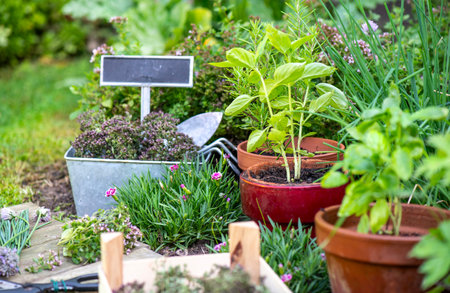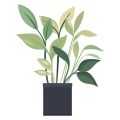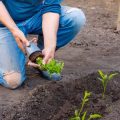1. Understanding the Importance of Material Selection
When building raised garden beds, choosing the right materials is one of the most important decisions youll make. The materials you select will impact how long your garden beds last, how safe they are for growing food, and how well your plants thrive over time.
Why Material Choice Matters
Raised garden beds are exposed to outdoor elements year-round—sunlight, rain, snow, and soil moisture can all take a toll. The wrong material may rot, rust, or leach harmful chemicals into your soil. By selecting durable and safe materials from the start, you can avoid costly repairs or replacements later on.
Key Benefits of Choosing the Right Materials
| Benefit | Description |
|---|---|
| Durability | High-quality materials resist weather damage and pests, lasting for many seasons without breaking down. |
| Safety | Certain woods and metals can leach toxins; safe choices protect your plants and your health. |
| Productivity | Good materials help maintain proper soil temperature and moisture levels, supporting healthy plant growth. |
Real-Life Example
For instance, untreated pine may be affordable but tends to rot quickly in wet conditions. On the other hand, cedar or redwood costs more up front but naturally resists decay and insects—making it a smarter long-term investment for serious gardeners.
Understanding how different materials perform helps you make informed choices that save time and money while creating a productive space for your vegetables, herbs, or flowers.
2. Comparing Wood Types: Cedar, Redwood, and Pressure-Treated Lumber
When building raised garden beds, choosing the right type of wood is key to making sure your garden lasts for years and stays safe for growing food. In the U.S., three common types of wood used are cedar, redwood, and pressure-treated lumber. Each has its own strengths and weaknesses when it comes to durability, environmental impact, and health concerns.
Cedar
Cedar is one of the most popular choices for raised beds because it naturally resists rot and insects. It can last 10–15 years without needing chemical treatments. Western Red Cedar is especially common in the Pacific Northwest. While it’s more expensive than other options, many gardeners feel it’s worth the investment for its natural beauty and long lifespan.
Pros:
- Naturally rot- and insect-resistant
- No chemicals—safe for organic gardening
- Lightweight and easy to work with
Cons:
- More expensive than other woods
- Can weather to a gray color over time unless sealed
Redwood
Redwood is similar to cedar in terms of durability and looks. It’s naturally resistant to rot and insects as well, but tends to be even more costly. It’s a great option if you want something that lasts a long time and looks beautiful without any treatment.
Pros:
- Naturally durable and pest-resistant
- Aesthetic appeal with rich color tones
- No chemical treatments required
Cons:
- One of the most expensive options
- Sourcing may be limited depending on region (more available in Western U.S.)
Pressure-Treated Lumber
This type of wood has been treated with preservatives to prevent rot, mold, and insect damage. Today’s pressure-treated lumber in the U.S. is much safer than older versions that contained toxic chemicals like arsenic. However, some gardeners still prefer to avoid it when growing edibles due to lingering concerns about chemical leaching.
Pros:
- Budget-friendly and widely available
- Highly resistant to decay and pests
- Long-lasting even in wet climates
Cons:
- Potential concerns about chemical leaching into soil (especially for food gardens)
- Heavier than untreated wood
- Might require lining inside the bed for added safety when growing edibles
Wood Type Comparison Table
| Wood Type | Lifespan (Years) | Naturally Rot-Resistant? | Chemical-Free? | Cost Level | Best For |
|---|---|---|---|---|---|
| Cedar | 10–15+ | Yes | Yes | High | Sustainable food gardens, organic growing |
| Redwood | 15–20+ | Yes | Yes | Very High | Aesthetic-focused gardens, long-term projects |
| Pressure-Treated Lumber | 15–20+ | No (chemically treated) | No (contains preservatives) | Low–Moderate | Beds for ornamentals or non-edible plants; budget builds with liner use for food gardens |
Selecting the right wood comes down to what matters most to you—budget, safety for growing vegetables, or how long you want your garden bed to last. Whether you go with natural cedar or redwood or opt for pressure-treated lumber with precautions, understanding these differences will help you make the best choice for your raised garden bed project.

3. Exploring Non-Wood Alternatives: Composite, Metal, and Concrete
While wood is a popular choice for raised garden beds, it’s not the only option—especially if youre looking for something long-lasting and low-maintenance. Non-wood materials like composite boards, metal panels, and concrete blocks offer excellent durability and can handle various climates across the U.S.
Composite Materials
Composite lumber, made from recycled plastic and wood fibers, mimics the look of natural wood but resists rot, pests, and warping. It’s a great choice if you want the appearance of wood without the upkeep. However, its often more expensive upfront than traditional lumber.
Pros:
- Low maintenance
- Weather-resistant
- Won’t splinter or crack
Cons:
- Higher initial cost
- Can retain heat in hot climates
Metal Raised Beds
Galvanized steel and corrugated metal are increasingly popular for their sleek look and exceptional durability. These materials work especially well in drier regions like the Southwest but can also be used in colder climates with proper insulation.
Pros:
- Extremely durable
- Pest-resistant
- Modern aesthetic appeal
Cons:
- Can get hot in full sun (may affect root systems)
- Edges may need to be protected to avoid injury
Concrete Blocks or Pavers
If youre going for a permanent solution, concrete blocks offer strength and stability that last for decades. They’re perfect for areas with high humidity or heavy rainfall since they won’t rot or break down over time.
Pros:
- Very durable and long-lasting
- Mold- and rot-resistant
- No chemical treatments needed
Cons:
- Heavy to install (may require help)
- Takes up more space due to block width
Climate Suitability Comparison Table
| Material Type | Best Suited Climate Zones (USDA) | Main Advantages | Main Drawbacks |
|---|---|---|---|
| Composite Lumber | Zones 5-10 (Moderate to Warm) | No rot or pest issues, wood-like appearance | More costly, heat retention in summer |
| Metal Panels (Galvanized Steel) | Zones 6-9 (Dry & Mild) | Pest-proof, modern design, lightweight | Might overheat roots in extreme heat |
| Concrete Blocks/Pavers | Zones 3-10 (All Climates) | Ultra-durable, weatherproof, no chemicals needed | Bigger footprint, heavy to move/install |
Selecting the right non-wood material depends on your local climate, budget, and how much maintenance youre willing to do. Whether youre dealing with dry desert heat or wet coastal air, theres a solid alternative out there that fits your needs.
4. Budget and Sustainability Considerations
When selecting materials for raised garden beds, it’s important to strike a balance between cost-effectiveness and environmental responsibility. Whether youre building one bed or an entire backyard setup, your choices can have a lasting impact on both your wallet and the planet.
Think Long-Term with Your Budget
While it might be tempting to go for the cheapest option upfront, lower-cost materials may not last as long, leading to more frequent replacements. Investing in durable materials can save money over time.
Cost Comparison of Common Materials
| Material | Initial Cost | Average Lifespan | Maintenance Needs |
|---|---|---|---|
| Cedar Wood | Medium to High | 10-15 years | Low |
| Pine (Untreated) | Low | 3-5 years | High |
| Recycled Composite Lumber | High | 25+ years | Very Low |
| Galvanized Steel | Medium to High | 20+ years | Low |
| Concrete Blocks | Medium | 30+ years | Very Low |
Sustainable Choices for Eco-Conscious Gardeners
If sustainability is important to you, consider using recycled or reclaimed materials. These options not only reduce waste but also add character and uniqueness to your garden space.
Eco-Friendly Material Ideas:
- Reclaimed Wood: Salvaged from old barns or buildings; make sure its untreated and safe for gardening use.
- Pallet Wood: Often free or inexpensive; look for heat-treated (HT) stamps to avoid chemical-treated wood.
- Recycled Plastic Lumber: Made from post-consumer plastics; highly durable and requires no maintenance.
- Bamboo: Fast-growing and renewable, though it may need more frequent replacement in certain climates.
- Repurposed Bricks or Stones: Great for a rustic look and extremely long-lasting.
A Balanced Approach Works Best
You don’t have to choose between saving money and helping the environment. Many gardeners find success by mixing materials — for example, using recycled wood for the frame and lining it with new hardware cloth for durability. By thinking creatively and planning ahead, you can build raised beds that are affordable, long-lasting, and eco-friendly.
5. Weather Resistance and Regional Considerations
When selecting materials for your raised garden beds, its important to consider how your local climate affects durability and maintenance. Different regions in the U.S. experience vastly different weather patterns, and choosing a material that can handle those conditions will help ensure your garden beds last for years.
Understanding Your Regional Climate
From the rainy Pacific Northwest to the dry heat of the Southwest, every region has unique challenges. Heres a quick breakdown of common U.S. climate zones and what materials tend to perform best in each:
| Region | Typical Weather | Recommended Materials | Why It Works |
|---|---|---|---|
| Pacific Northwest | Heavy rainfall, cool temperatures | Cedar, Redwood, Composite | Naturally rot-resistant woods and composites hold up well against moisture |
| Southwest (e.g., Arizona, New Mexico) | Intense sun, high temperatures, low humidity | Metal (galvanized steel), Composite | Metal resists UV damage and wont dry out or crack; composites won’t warp in heat |
| Southeast (e.g., Florida, Georgia) | High humidity, frequent rain | Cypress, Pressure-treated wood (non-toxic), Composite | Materials that resist mold and decay perform better in damp conditions |
| Northeast & Midwest | Cold winters, freeze-thaw cycles | Cedar, Redwood, Recycled Plastic Lumber | Woods that resist cracking and plastics that handle temperature swings are ideal |
Material Behavior in Different Conditions
Here are a few things to keep in mind when evaluating materials for weather resistance:
- Wood: Natural woods like cedar and redwood contain oils that make them more resistant to rot. However, untreated pine may not last long in wet climates.
- Metal: Galvanized steel resists rust and handles extreme heat well but may become hot to the touch in sunny areas.
- Composite: Made from recycled plastic and wood fibers, composite boards are moisture- and UV-resistant but can be more expensive upfront.
- Plastic Lumber: Fully synthetic options are great for wet or variable climates but may lack the natural look some gardeners prefer.
Tip:
If you live in an area with lots of rain or snow, consider elevating your garden bed slightly off the ground or adding a gravel base for drainage. For hot, dry regions, use mulch to retain soil moisture inside your raised beds.
Your Local Weather Matters
Selecting the right material based on your regional weather isnt just about longevity—its also about reducing maintenance and ensuring a better growing environment for your plants. Always match your garden bed materials with the climate they’ll face year-round.
6. Tips for Extending the Life of Your Raised Beds
Building your raised garden bed with durable materials is a great start, but taking a few extra steps in sealing, lining, and regular maintenance can significantly extend its lifespan. Here are some practical tips to help you protect your investment and keep your garden beds in great shape for years to come.
Seal the Wood Properly
If youre using wood—especially untreated or naturally rot-resistant types like cedar or redwood—applying a non-toxic sealant can help prevent moisture damage and decay. Make sure to choose a food-safe wood sealer if youre growing edibles. Apply it to all sides of the wood, including the ends, before assembling the bed.
Recommended Sealants for Garden Beds
| Sealant Type | Food-Safe | Best For |
|---|---|---|
| Tung Oil (Pure) | Yes | Cedar, Redwood |
| Linseed Oil (Raw) | Yes (when pure) | Pine, Fir |
| Beeswax-Based Sealer | Yes | All Wood Types |
Add a Protective Liner
Lining the inside of your raised bed creates a barrier between the soil and the wood or metal frame. This reduces direct contact with moisture and helps slow down rot or rust. Use landscape fabric, hardware cloth, or plastic sheeting designed for garden use. Avoid liners that can trap water without proper drainage.
Common Liner Materials and Their Benefits
| Liner Material | Benefits |
|---|---|
| Landscape Fabric | Promotes drainage while protecting wood from wet soil |
| Plastic Sheeting (BPA-free) | Provides excellent moisture barrier; ensure proper drainage holes |
| Hardware Cloth (Galvanized) | Keeps out burrowing pests; pairs well with other liners |
Keep Up With Regular Maintenance
A little upkeep goes a long way when it comes to raised beds. Check for signs of wear like loose screws, warped boards, or rusty fasteners at the start and end of each season. Reseal wood every couple of years, especially in areas with heavy rain or intense sun exposure. Also, make sure weeds and debris aren’t building up around the base of your bed—it helps prevent moisture retention that could lead to rotting.
Quick Maintenance Checklist:
- Inspect corners and joints for stability
- Tighten any loose hardware
- Check liner condition and replace if damaged
- Reseal wood surfaces as needed
- Clear away leaves and mulch buildup along edges
With these simple strategies—sealing your materials, adding protective liners, and staying on top of seasonal maintenance—you can greatly increase the longevity of your raised garden beds and keep them looking and performing their best.


